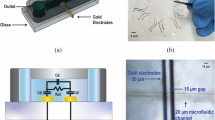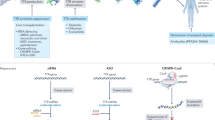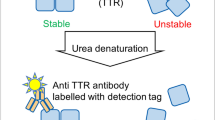Abstract
Coding mutations in TTR gene cause a rare hereditary form of systemic amyloidosis, which has a complex genotype–phenotype correlation. We investigated the role of non-coding variants in regulating TTR gene expression and consequently amyloidosis symptoms. We evaluated the genotype–phenotype correlation considering the clinical information of 129 Italian patients with TTR amyloidosis. Then, we conducted a re-sequencing of TTR gene to investigate how non-coding variants affect TTR expression and, consequently, phenotypic presentation in carriers of amyloidogenic mutations. Polygenic scores for genetically determined TTR expression were constructed using data from our re-sequencing analysis and the GTEx (Genotype-Tissue Expression) project. We confirmed a strong phenotypic heterogeneity across coding mutations causing TTR amyloidosis. Considering the effects of non-coding variants on TTR expression, we identified three patient clusters with specific expression patterns associated with certain phenotypic presentations, including late onset, autonomic neurological involvement, and gastrointestinal symptoms. This study provides novel data regarding the role of non-coding variation and the gene expression profiles in patients affected by TTR amyloidosis, also putting forth an approach that could be used to investigate the mechanisms at the basis of the genotype–phenotype correlation of the disease.
Similar content being viewed by others
Log in or create a free account to read this content
Gain free access to this article, as well as selected content from this journal and more on nature.com
or
References
Conceicao I : Clinical features of TTR-FAP in Portugal. Amyloid 2012; 19 (Suppl 1): 71–72.
Ando Y, Ueda M : Diagnosis and therapeutic approaches to transthyretin amyloidosis. Curr Med Chem 2012; 19: 2312–2323.
Coelho T, Merlini G, Bulawa CE et al: Mechanism of action and clinical application of tafamidis in hereditary transthyretin amyloidosis. Neurol Ther 2016; 5: 1–25.
Rapezzi C, Quarta CC, Obici L et al: Disease profile and differential diagnosis of hereditary transthyretin-related amyloidosis with exclusively cardiac phenotype: an Italian perspective. Eur Heart J 2013; 34: 520–528.
Ando Y, Coelho T, Berk JL et al: Guideline of transthyretin-related hereditary amyloidosis for clinicians. Orphanet J Rare Dis 2013; 8: 31.
Coelho T, Maurer MS, Suhr OB : THAOS – The Transthyretin Amyloidosis Outcomes Survey: initial report on clinical manifestations in patients with hereditary and wild-type transthyretin amyloidosis. Curr Med Res Opin 2013; 29: 63–76.
Lemos C, Coelho T, Alves-Ferreira M et al: Overcoming artefact: anticipation in 284 Portuguese kindreds with familial amyloid polyneuropathy (FAP) ATTRV30M. J Neurol Neurosurg Psychiatry 2014; 85: 326–330.
Hellman U, Suhr O : Regional differences and similarities of FAP in Sweden. Amyloid 2012; 19 (Suppl 1): 53–54.
Bonaiti B, Olsson M, Hellman U, Suhr O, Bonaiti-Pellie C, Plante-Bordeneuve V : TTR familial amyloid polyneuropathy: does a mitochondrial polymorphism entirely explain the parent-of-origin difference in penetrance? Eur J Hum Genet 2010; 18: 948–952.
Ruzhansky K, Scoon J, Weimer LH, Maurer MS, Berk JL, Brannagan TH 3rd : Discordant phenotype in monozygotic female twins with Lys35Thr TTR familial amyloidotic polyneuropathy. J Clin Neuromuscul Dis 2014; 16: 1–6.
Santos D, Coelho T, Alves-Ferreira M et al: Variants in RBP4 and AR genes modulate age at onset in familial amyloid polyneuropathy (FAP ATTRV30M). Eur J Hum Genet 2016; 24: 756–760.
Dardiotis E, Koutsou P, Zamba-Papanicolaou E et al: Complement C1Q polymorphisms modulate onset in familial amyloidotic polyneuropathy TTR Val30Met. J Neurol Sci 2009; 284: 158–162.
Soares ML, Coelho T, Sousa A et al: Susceptibility and modifier genes in Portuguese transthyretin V30M amyloid polyneuropathy: complexity in a single-gene disease. Hum Mol Genet 2005; 14: 543–553.
Saporta MA, Plante-Bordeneuve V, Misrahi M, Cruz MW : Discordant expression of familial amyloid polyneuropathy in monozygotic Brazilian twins. Amyloid 2009; 16: 38–41.
Polimanti R, Di Girolamo M, Manfellotto D, Fuciarelli M : Functional variation of the transthyretin gene among human populations and its correlation with amyloidosis phenotypes. Amyloid 2013; 20: 256–262.
Polimanti R, Di Girolamo M, Manfellotto D, Fuciarelli M : In silico analysis of TTR gene (coding and non-coding regions, and interactive network) and its implications in transthyretin-related amyloidosis. Amyloid 2014; 21: 154–162.
Iorio A, De Angelis F, Di Girolamo M et al: Most recent common ancestor of TTR Val30Met mutation in Italian population and its potential role in genotype-phenotype correlation. Amyloid 2015; 22: 73–78.
Spielmann M, Mundlos S : Looking beyond the genes: the role of non-coding variants in human disease. Hum Mol Genet 2016; 25: R157–R165.
GTEx Consortium: Human genomics. The Genotype-Tissue Expression (GTEx) pilot analysis: multitissue gene regulation in humans. Science 2015; 348: 648–660.
Gusev A, Ko A, Shi H et al: Integrative approaches for large-scale transcriptome-wide association studies. Nat Genet 2016; 48: 245–252.
Iorio A, De Angelis F, Di Girolamo M et al: Population diversity of the genetically determined TTR expression in human tissues and its implications in TTR amyloidosis. BMC Genomics 2017; 18: 254.
Luigetti M, Conte A, Del Grande A et al: TTR-related amyloid neuropathy: clinical, electrophysiological and pathological findings in 15 unrelated patients. Neurol Sci 2013; 34: 1057–1063.
Russo M, Mazzeo A, Stancanelli C et al: Transthyretin-related familial amyloidotic polyneuropathy: description of a cohort of patients with Leu64 mutation and late onset. J Peripher Nerv Syst 2012; 17: 385–390.
Solaro C, Schenone A, Di Sapio A et al: An Italian family with Ala-47 transthyretin mutation associated with cardiomyopathy and polyneuropathy. Neuromuscul Disord 2000; 10: 52–55.
Cappelli F, Frusconi S, Bergesio F et al: The Val142Ile transthyretin cardiac amyloidosis: not only an Afro-American pathogenic variant? A single-centre Italian experience. J Cardiovasc Med (Hagerstown) 2016; 17: 122–125.
Cortese A, Vita G, Luigetti M et al: Monitoring effectiveness and safety of Tafamidis in transthyretin amyloidosis in Italy: a longitudinal multicenter study in a non-endemic area. J Neurol 2016; 263: 916–924.
Soares ML, Coelho T, Sousa A et al: Haplotypes and DNA sequence variation within and surrounding the transthyretin gene: genotype-phenotype correlations in familial amyloid polyneuropathy (V30M) in Portugal and Sweden. Eur J Hum Genet 2004; 12: 225–237.
Ward LD, Kellis M : HaploReg: a resource for exploring chromatin states, conservation, and regulatory motif alterations within sets of genetically linked variants. Nucleic Acids Res 2012; 40: D930–D934.
Purcell S, Neale B, Todd-Brown K et al: PLINK: a tool set for whole-genome association and population-based linkage analyses. Am J Hum Genet 2007; 81: 559–575.
Hahsler M, Grun B, Hornik K : arules – a computational environment for mining association rules and frequent item sets. J Stat Softw 2005; 14: 1–25.
Stephens M, Smith NJ, Donnelly P : A new statistical method for haplotype reconstruction from population data. Am J Hum Genet 2001; 68: 978–989.
Barrett JC, Fry B, Maller J, Daly MJ : Haploview: analysis and visualization of LD and haplotype maps. Bioinformatics 2005; 21: 263–265.
McColgan P, Viegas S, Gandhi S et al: Oculoleptomeningeal amyloidosis associated with transthyretin Leu12Pro in an African patient. J Neurol 2015; 262: 228–234.
Beirao JM, Malheiro J, Lemos C et al: Impact of liver transplantation on the natural history of oculopathy in Portuguese patients with transthyretin (V30M) amyloidosis. Amyloid 2015; 22: 31–35.
Beirao JM, Malheiro J, Lemos C, Beirao I, Costa P, Torres P : Ophthalmological manifestations in hereditary transthyretin (ATTR V30M) carriers: a review of 513 cases. Amyloid 2015; 22: 117–122.
Molina OG, Judge D, Campbell W, Chahal H, Mugmon M : Transthyretin cardiac amyloidosis: an under-diagnosed cause of heart failure. J Community Hosp Intern Med Perspect 2014; 4: 25500.
Ammirati E, Marziliano N, Vittori C et al: The first Caucasian patient with p.Val122Ile mutated-transthyretin cardiac amyloidosis treated with isolated heart transplantation. Amyloid 2012; 19: 113–117.
Polimanti R, Yang C, Zhao H, Gelernter J : Dissecting ancestry genomic background in substance dependence genome-wide association studies. Pharmacogenomics 2015; 16: 1487–1498.
Karaca S, Karaca M, Civelek E, Ozgul RK, Sekerel BE, Polimanti R : Haplotype analysis of non-HLA immunogenetic loci in Turkish and worldwide populations. Gene 2016; 587: 132–136.
Murakami T, Sango K, Watabe K et al: Schwann cells contribute to neurodegeneration in transthyretin amyloidosis. J Neurochem 2015; 134: 66–74.
Acknowledgements
We thank Dr Giulia Bisogno for her clinical support in the results interpretation. We acknowledge the GTEx Project and their funding agencies to have made their data publically available. The present study was supported by an Investigator-Initiated Research to the University of Rome ‘Tor Vergata’ from Pfizer Inc. Pfizer Inc. had no role in the study design, data analysis, and results interpretation of the present study.
Disclaimer
RP had full access to all study data and take responsibility for the integrity of the data and the accuracy of the analyses.
Author information
Authors and Affiliations
Corresponding author
Ethics declarations
Competing interests
ML received travel grants from Kedrion, Pfizer, and Grifols. The other authors declare no conflict of interest.
Additional information
Supplementary Information accompanies this paper on European Journal of Human Genetics website
Supplementary information
Rights and permissions
About this article
Cite this article
Iorio, A., De Lillo, A., De Angelis, F. et al. Non-coding variants contribute to the clinical heterogeneity of TTR amyloidosis. Eur J Hum Genet 25, 1055–1060 (2017). https://doi.org/10.1038/ejhg.2017.95
Received:
Revised:
Accepted:
Published:
Issue date:
DOI: https://doi.org/10.1038/ejhg.2017.95
This article is cited by
-
Emerging, novel gene-modulating therapies for transthyretin amyloid cardiomyopathy
Heart Failure Reviews (2025)
-
Clinical spectrum of Transthyretin amyloidogenic mutations among diverse population origins
Human Genomics (2024)
-
Hereditary transthyretin amyloidosis: a myriad of factors that influence phenotypic variability
Journal of Neurology (2024)
-
Three Newly Recognized Likely Pathogenic Gene Variants Associated with Hereditary Transthyretin Amyloidosis
Neurology and Therapy (2022)
-
Current and Emerging Therapies for Hereditary Transthyretin Amyloidosis: Strides Towards a Brighter Future
Neurotherapeutics (2021)



